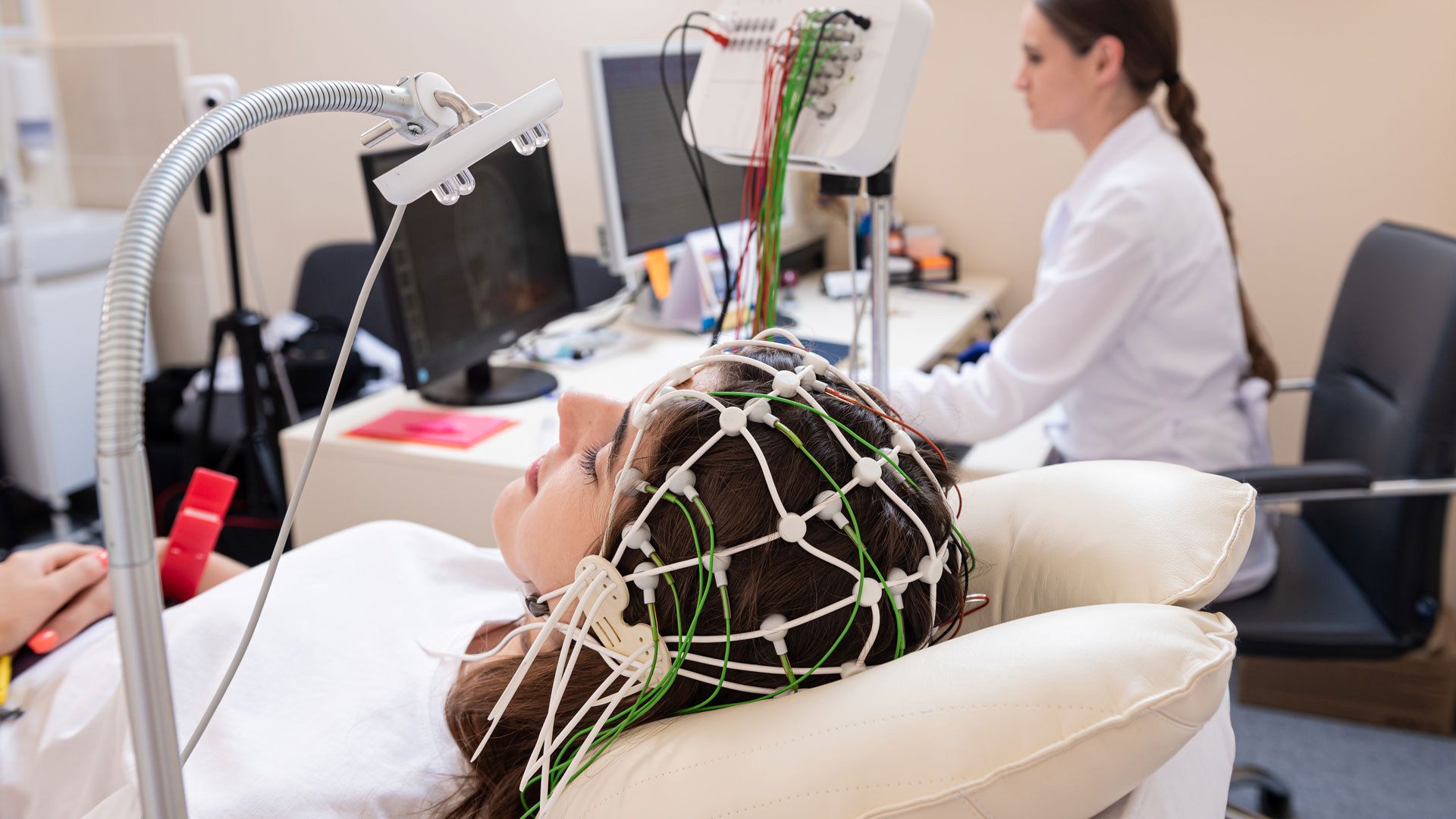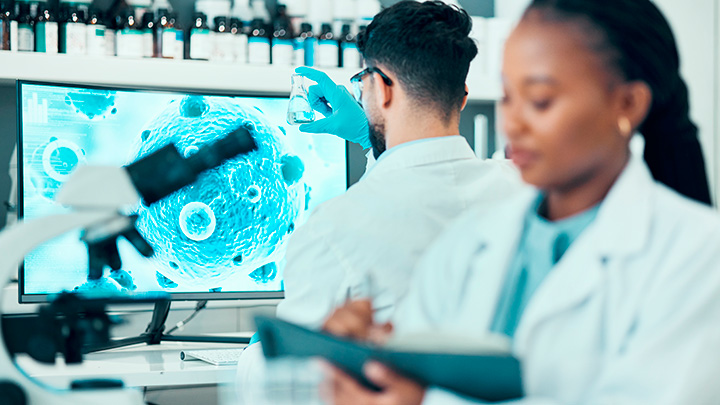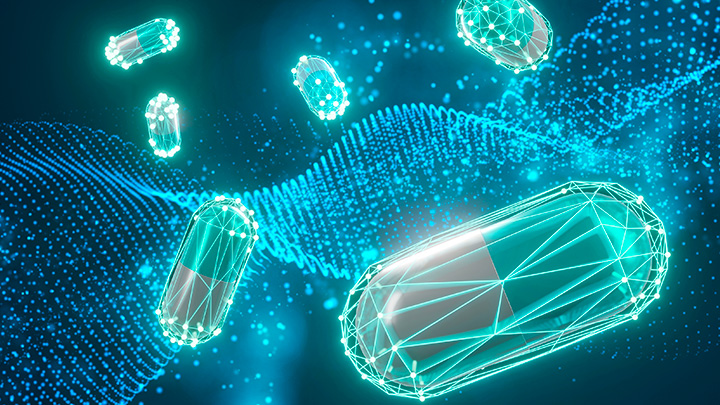And the pace of biotechnological advancements continues to accelerate. In fact, few domains can rival the dynamic innovation and rapid growth of biotechnology. In 2022, the global biotech market was estimated at USD 1,224 billion and it is expected to be worth about USD 3,210 billion by 2030.
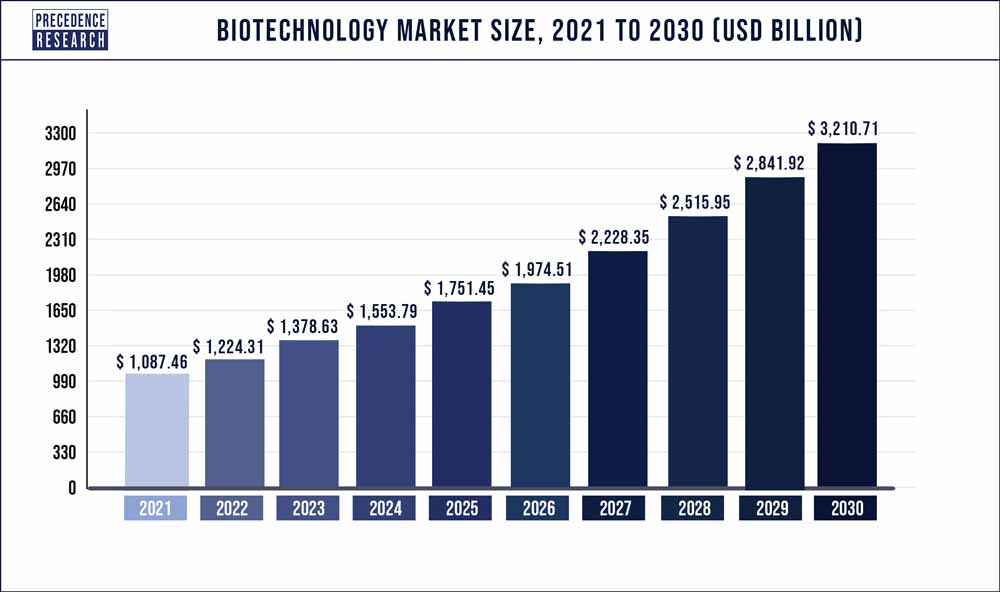
Source:
Precedence research
Without further ado, let’s take a deep dive into the latest and most fascinating biotech breakthroughs that are worth your attention.
The most promising biotech advancements to keep an eye on
Gene editing
One of the most well-known areas of biotechnology is gene editing. In 2020, the prestigious
Nobel Prize in Chemistry was awarded to Emmanuelle Charpentier and Jennifer Doudna for their groundbreaking work in creating the CRISPR-Cas9 gene editing technology, which significantly boosted the field’s visibility and prestige.
Imagine being able to erase genetic mistakes that cause diseases or enhance specific traits for better health and longevity. That’s exactly what gene editing allows scientists to do. As the name suggests, gene editing involves making precise, controlled modifications to the DNA sequences of a living organism, influencing the traits that those genes express. The significance of this technology cannot be overstated, as it holds the potential to revolutionize the way we treat disorders.
Real-world application. One striking example of this technology is the development of gene therapies that can treat, or even cure, certain genetic conditions.
Luxturna, a revolutionary gene therapy, provides hope for individuals suffering from a specific type of inherited blindness. By delivering a normal copy of a mutated gene directly into the patient’s cells, Luxturna restores the ability to produce a protein necessary for sight.
Nanobiotechnology
Simply put, nanobiotechnology is biotechnology at the nanoscale. It involves the application of nanoscale tools and processes to biological systems, enabling precise manipulation, imaging, and control that are simply impossible at larger scales.
At the core of nanobiotechnology are nanoparticles — structures that are 100 nanometers or smaller. Due to their size, nanoparticles possess unique properties that make them valuable for various biological applications. For example, in drug delivery, nanoparticles can be engineered to carry therapeutic agents directly to specific cells, such as cancer cells, improving the efficacy and reducing the side effects of treatment.
Real-world application. A notable example of nanobiotechnology in action is the use of lipid nanoparticles in the mRNA vaccines developed by
Pfizer-BioNTech and Moderna for COVID-19. These nanoparticles encapsulate the mRNA to protect it from degradation in the body and facilitate its delivery into our cells, thus playing a crucial role in the vaccine’s function.
Bioprinting
Bioprinting is essentially the process of using 3D printing techniques to construct biological tissues and potentially whole organs. In the process of bioprinting, the desired organ’s 3D anatomical structure is first mapped out using medical imaging techniques like CT or MRI scans. Then, living cells are isolated from patient tissues or stem cells and cultivated into bioinks. These bioinks are then printed layer by layer, following the anatomical blueprint, and are often placed in a bioreactor to mature before they can be used for their intended purpose.
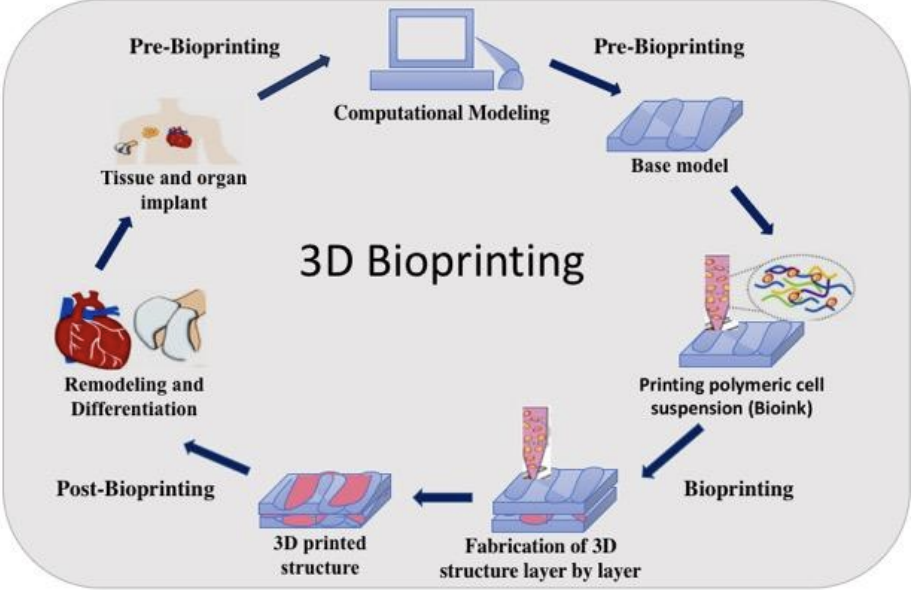
Source: IOSR Journal of Pharmacy and Biological Sciences
The promise of bioprinting is immense — think solving the problem of organ shortages, developing personalized treatment, creating models for accelerated drug testing, and more.
Real-world application:
TeVido, an innovative biotech company, is concentrating its efforts on creating ground-breaking solutions in the area of reconstructive surgery using 3D printing technology. The company’s signature product, TruPigment™, is designed to deliver personalized treatments for vitiligo through the transplantation of skin cells. This sophisticated process involves obtaining a minor skin biopsy from the patient, from which healthy melanocytes are carefully isolated and cultivated in a lab environment. These cultured melanocytes are then transformed into a cellular suspension, which can be administered to the skin areas affected by depigmentation. The treatment holds great potential to reintroduce natural skin coloration and restore the skin’s original appearance.
Brain-computer interfaces
The concept of a
brain-computer interface (BCI) belongs to neurotechnology — a rapidly evolving field that merges neuroscience and technology, focusing on the enhancement of brain functions. BCIs create a direct pathway of communication between the brain and an external device or software. This technology works by translating neuronal information into commands capable of controlling digital or physical platforms. BCIs can be invasive, involving electrodes implanted directly into the brain, or non-invasive, using devices to pick up brain signals through the scalp.
Real-world application: In the real world, BCIs have begun to have transformative impacts, particularly in medical and assistive technologies. For example,
Neuralink, a company founded by Elon Musk, is working on developing implantable BCIs with the ultimate goal to enable seamless symbiosis between a human brain and artificial intelligence. On a more immediate, practical level, BCIs are being used to help people with severe physical disabilities. For instance,
Milo, a brain-controlled wheelchair, leverages consumer-grade EEG and self-driving technology to perform real-time neural decoding and navigation in indoor environments.
Synthetic biology
Synthetic biology is a cross-disciplinary field that combines the principles from biology, engineering, and computer science. Its main objective is to design and construct new biological components and systems that are not found in nature.
As DNA synthesis is becoming cheaper and faster, researchers are able to create specific DNA sequences and insert them into an organism’s genome. As a result, these modified chromosomes can be used in the manufacturing of bio-fuels, renewable chemicals, new pharmaceuticals, and even food ingredients.
Real-world application: One of the first synthetic biology success stories was the production of semi-synthetic
artemisinin, the anti-malarial drug. The problem with artemisinin is the highly volatile supply since in nature it is produced by the plant Artemisia annua. The researchers from UC Berkeley managed to successfully implant new genes and engineered a new metabolic pathway in E. coli bacteria to quickly and cheaply synthesize a precursor to the chemical compound.
Wrapping up
It is a wonderful world we live in — the world marked by bold scientific innovations and astonishing medical breakthroughs. The DNA structure was revealed 70 years ago but this year scientists expect to
read the entire human genome, with no gaps or errors. Indeed, we have come leaps and bounds. From the revolutionary potential of gene editing to the personalized therapeutic approaches supported by bioprinting, and from the marvels of nanobiotechnology to the future-oriented developments in neurotechnology and synthetic biology — each innovation opens the door to a new realm of possibilities.
At
Kanda, we help our clients stay on top of emerging trends and harness the power of technology to drive positive changes. From AI-powered precision medicine solutions to clinical data interoperability platforms to feature-rich mHealth solutions, we bring deep
healthcare development expertise to the table and industry domain to solve even the toughest of challenges.
Drop us a line to see how we can help you.

 Source: Precedence research
Without further ado, let’s take a deep dive into the latest and most fascinating biotech breakthroughs that are worth your attention.
Source: Precedence research
Without further ado, let’s take a deep dive into the latest and most fascinating biotech breakthroughs that are worth your attention.

